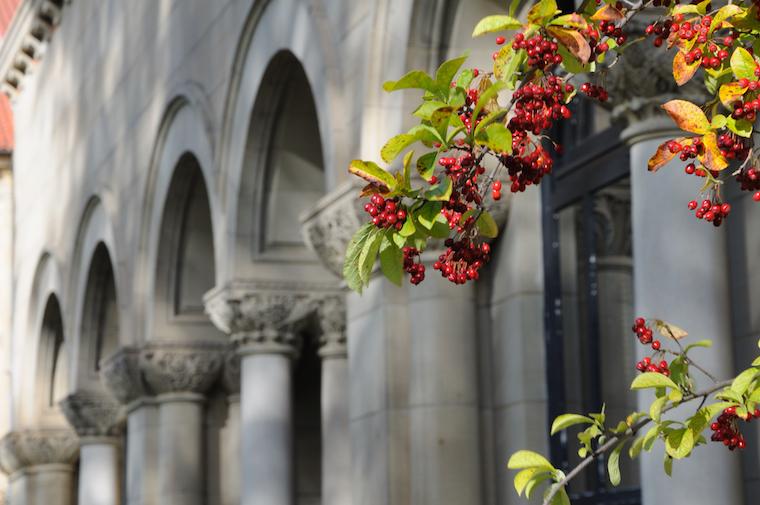News Releases
Report: Oberlin College generates $143 million in annual spending for local economy
September 25, 2019
Communications Staff

The Cox Administration Building.
Photo credit: Gregory Pendolino
OBERLIN, OHIO— Oberlin College contributes more than $143 million in annual spending to the local economy, according to the college’s first comprehensive economic impact analysis.
The results included in “Our Community: 2019 Oberlin College Community Impact Report” released today measure the college’s direct and indirect spending, overall economic output, cultural contributions and impact on the community’s residents, workforce and employers.
“This report demonstrates how the college and town have always been physically, socially, and economically intertwined,” Oberlin College President Carmen Twillie Ambar said. “Often, the intangibles of community service and instruction can be overlooked when assessing the importance of an institution. We at Oberlin are proud of our community integration, and the impact the college has on quality of life across our region.”
In 2019, Oberlin College will directly and indirectly influence more than $200 million in expense output, directly and indirectly influence over 4,000 jobs, and influence just over $29 million in taxes, according to the report.
Some additional facts in the report:
- About 7 percent of Oberlin’s 2,840 students come from Ohio
- More than 600 graduates live and work in Lorain County
- Almost 700 graduates reside in Cuyahoga County
- Oberlin students annually engage in 115,000 hours of community service
- The majority of Oberlin’s 1,100-plus employees live and raise their families in Lorain County
- Over the past 18 years, 79 Oberlin High School graduates have attended Oberlin College tuition free.
The college’s contributions to the quality of life in the community are outlined as well, including its ownership of community icons such as The Hotel at Oberlin and the Apollo Theatre.
The college’s Bonner Center for Community-Engaged Learning, Teaching, and Research provides the opportunity for students and faculty to connect with community service opportunities in Oberlin and beyond, the report said.
“Oberlin is committed to community-engaged learning at facilities such as the Bonner Center,” Ambar said. “We also play a significant role in our community’s sustainability efforts. Five buildings on campus have been constructed or renovated in accordance with the Green Building Counsel’s LEED Silver status or higher.”
The college contracted with IMPLAN of Huntersville, N.C., to conduct the study to determine the college’s financial and cultural impacts on the community. The company used public economic and institutional data, along with information from the college, as the basis for its analysis.
The full report can be viewed here.
Contact:
Scott Wargo
Director of Media Relations
440-775-5197
Scott.Wargo@oberlin.edu
- ### -
You may also like…
NEA Big Read in Oberlin Continues with Historical Re-Enactment
Oberlin College continues its National Endowment for the Arts Big Read exploration of Homegoing by Yaa Gyasi with a historical re-enactment on September 21, 2022 at 4:30 p.m. at Oberlin Public Library.
Oberlin College Recognized for Sustainability Initiatives that go Above and Beyond
Oberlin College has been named a 2021 Excellence in Energy Award winner by NRG Energy, Inc. for the significant impact of its sustainability initiatives that achieve notable environmental and social benefits.
Oberlin to launch Internship+ Commitment for students entering in fall 2022
Beginning with students entering in fall 2022, Oberlin will offer each student up to $5,000 in financial support for a qualified summer opportunity, including internships, research- and performance-based experiences, and other pre-professional activities.


